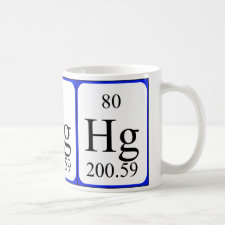
Authors: Singh DK, Mishra S
Article Title: Synthesis and characterization of Hg(II)-ion-imprinted polymer: Kinetic and isotherm studies.
Publication date: 2010
Journal: Desalination
Volume: 257
Issue: (1-3)
Page numbers: 177-183.
DOI: 10.1016/j.desal.2010.02.026
Alternative URL: http://www.sciencedirect.com/science/article/B6TFX-4YR49T6-1/2/dcda1d7be315037cbeca54987bf7fb22
Abstract: Hg(II)-ion-imprinted polymer (IIP) was prepared by the formation of a binary complex of mercury (imprint ion) with 4-(2-thiazolylazo) resorcinol (TAR) and thermally copolymerizing with methacrylic acid (monomer) and ethylene glycol dimethadrylate (crosslinker), and 2, 2'-azobisisobutyronitrile as initiator in cyclohexanol as porogen. Mercury(II) was leached with 0.5 M HCl - 1M thiourea. Control polymer (CP) was also prepared without using imprint ion. The prepared IIP and CP were characterized with FT-IR, microanalysis, SEM analysis and surface area measurement. The effect of pH, adsorption kinetic and adsorption isotherm of imprinted polymer and control polymer were studied. The mechanism for adsorption of mercury was found to follow Freundlich isotherm and pseudo first order model. The adsorption capacity of Hg(II) on IIP and CP is 125 and 57.6 μmol g-1, respectively. The relative selectivity factor (αr) values of Hg(II)/Zn(II), Hg(II)/Cu(II), Hg(II)/Ni(II) and Hg(II)/Co(II) are 62.5, 65.3, 64.6 and 70.6, respectively. The detection limit corresponding to three times the standard deviation of the blank was found to be 2.875 μg L-1. The IIP has been successfully applied for the recovery of trace Hg(II) in real water samples and those spiked with standards
Template and target information: mercury ion, Hg(II)
Author keywords: Ion-imprinted polymer, Mercury(II), 4-(2-thiazolylazo) resorcinol, isotherm, Kinetic



Join the Society for Molecular Imprinting

New items RSS feed
Sign-up for e-mail updates:
Choose between receiving an occasional newsletter or more frequent e-mail alerts.
Click here to go to the sign-up page.
Is your name elemental or peptidic? Enter your name and find out by clicking either of the buttons below!
Other products you may like:
 MIPdatabase
MIPdatabase









